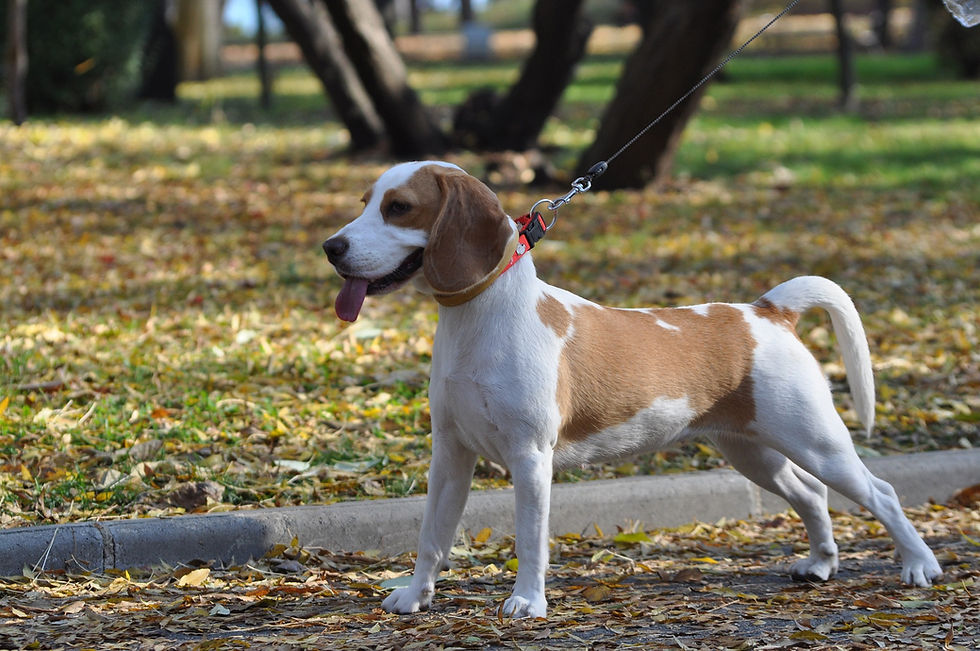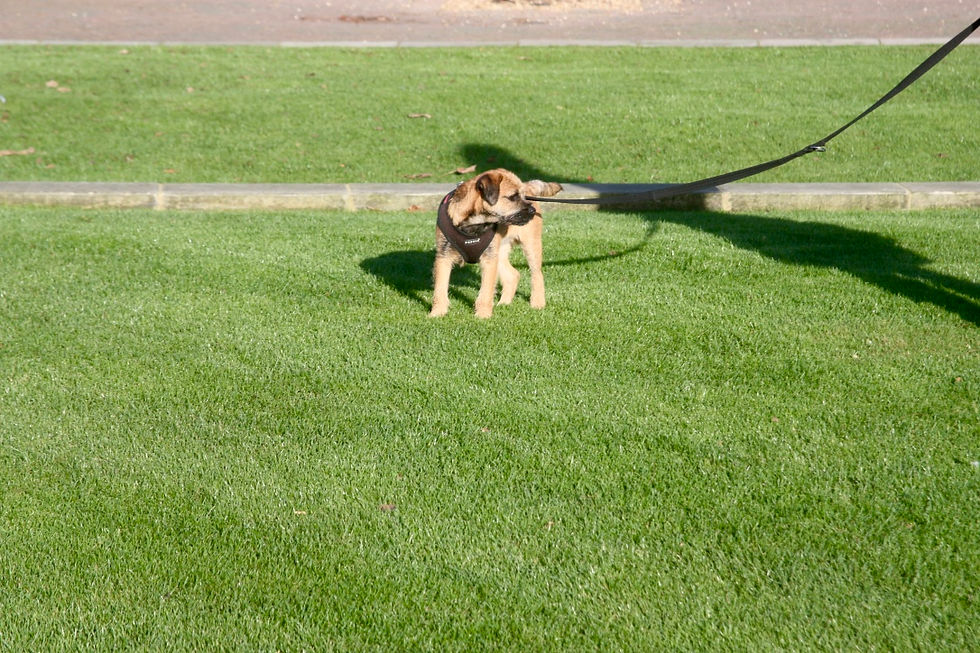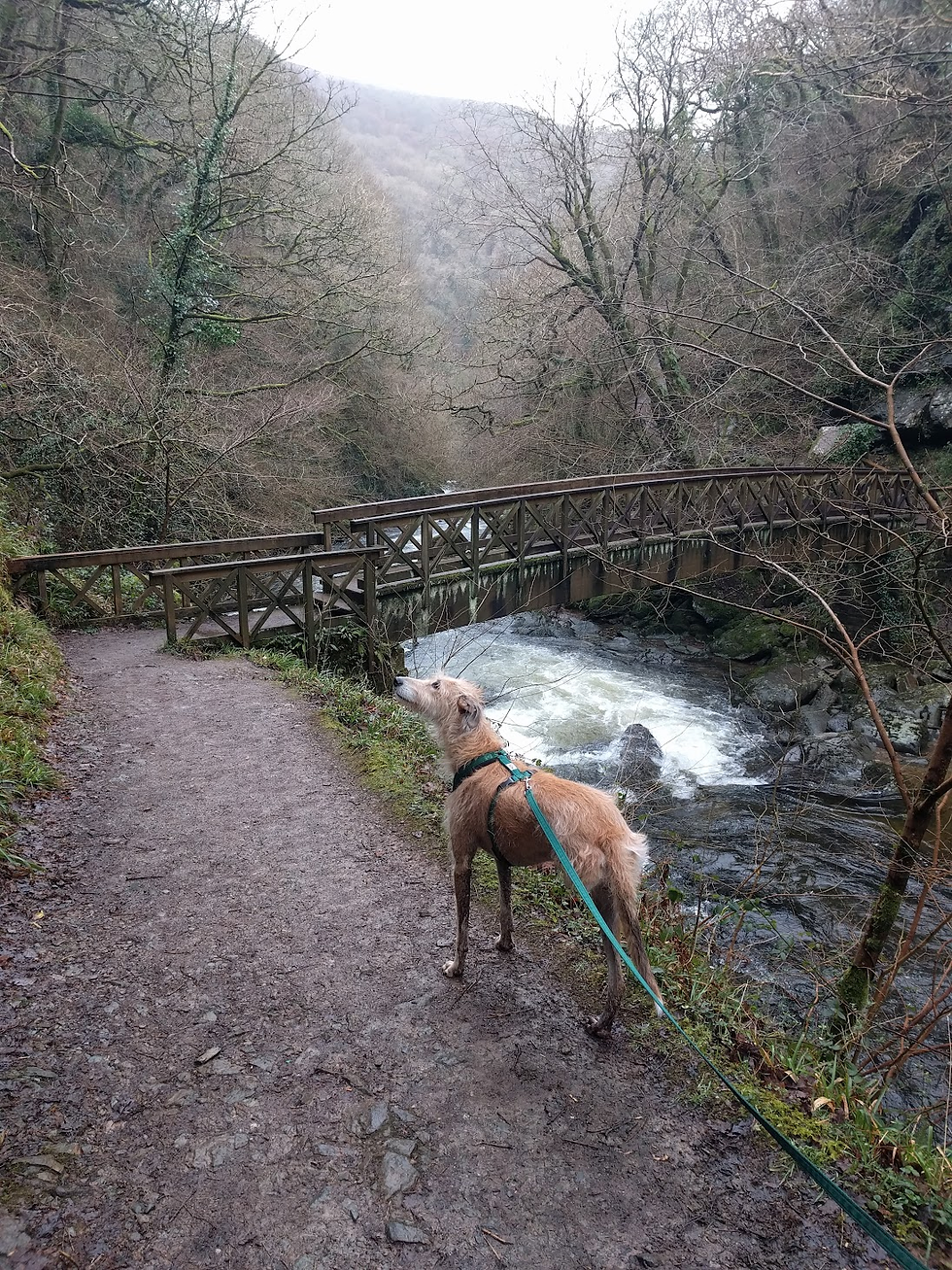6 reasons your dog should try a harness today
- Harriet Alexander
- Oct 21, 2018
- 4 min read
Updated: May 26, 2019
Equipment in dog training can be a hot topic and there's loads of gadgets out there claiming to cure behavioural issues. My recommendation to clients about what they use to walk their dog is pretty simple: harnesses over collars. Over and over again I've found that changing a dog from a collar to a comfortable harness can make an immediate and positive difference. Go on, give it a try!
1. Protect the neck (and eyes)
Harnesses don’t put any pressure on the delicate neck area. There is evidence to suggest that continued pressure on the neck and throat can lead to back and neck problems, as well as issues linked to thyroid damage and eye problems. Swedish behaviourist Anders Hallgren conducted a study of 400 dogs in which he found that 63% of the dogs had neck and spinal injuries. Of those dogs, 91% had been exposed to jerks on the lead or had a long history of pulling and straining on the end of a lead. He found that "pulling and jerking on the leash affect especially the neck and throat of the dog...the muscles that absorb the pressure are situated mostly at the sides of the neck. The neck and throat are almost unprotected."

2. No more jerk behaviour
If a dog lunges or accelerates quickly, there's no risk they will give themselves whiplash while wearing a harness. Even if a dog ‘never pulls’, there is always a chance that something might catch them off guard or the human might fall and jerk the lead themselves.

3. Promotes good walking
Due to the strain and discomfort a collar can cause, many dogs start to walk in a more relaxed manner just by switching to a harness.

4. More forgiving of your handling
‘Handler error’ has less of an impact. When people are nervous, in a hurry or even just new to walking dogs, they will naturally tighten and/or pull on the lead. With a harness, the impact of this tension on the dog is reduced significantly, so you won't be causing harm while you develop these skills. This is especially true for puppies, as it takes time for them to learn how to walk politely.

5. Avoid negative associations
For dogs to learn, they need as much oxygen going to the brain as possible. Pressure on the throat from a collar compromises this. If they're worried about something and their reaction (lunging, running away etc.) becomes paired with the feeling of the collar tightening, this discomfort can become associated with the thing they originally feared.
When we influence a dog’s head movements, we influence their ability to communicate with other dogs effectively. Harnesses are more ‘hands off’ - they allow the dog to look around, investigate and use body language just that little bit more easily. The lead is also less likely to get caught around the dog's feet when using a harness.

6. Add a little security
Harnesses make it easier to get out of a sticky situation! It is much easier to grab a harness than risk choking a dog by grabbing its collar. If you wanted to get your dog out of a situation very quickly, think about which piece of equipment is going to be preferable. One of my clients experienced this recently when her puppy fell into a freezing cold pond - it was a big relief to be able to pull her out by her harness rather than yanking her out by the throat!

HOWEVER, not all harnesses are created equal
I'm not suggesting you rush out and buy any old harness. Many non-pull designs restrict the front legs of the dog which can lead to pain and long term damage. A bit like living your life in a pencil skirt. Teaching your dog to walk well should be about building a skill, rather than relying on restrictive equipment.
The gait of the dog should not be affected, and shoulder joints in particular need to be able to move freely. A Y-shaped harness which is snug (but not tight) is ideal, like this dog here. I also recommend long leads (at least 3m) - way more versatile and you may find the less you fight to have your dog pinned to your side, the better the walking becomes.
Some brands I like include:
Harnesses
Haqihana harness - these handmade Italian harnesses are not only rather stylish, they are incredibly well made and will last years.
Perfect Fit harness - each section of these harnesses is a separate piece, which means you really can find a 'perfect fit', and pieces can be replaced individually rather than buying the whole thing again (good for growing dogs). These are fleece lined which prevents rubbing and fur matting.
Mekuti TTouch harness - simple, well priced and comfortable with multiple attachment points.
Ruffwear harness - a higher end option, but incredibly sturdy and will last forever. Good for large breeds and longer hikes or walking holidays.
Red Dingo harness - these are cost effective and adjustable, so good for puppies and young dogs who are still growing. There is a big range of colours and designs, and the bone shaped clips are pretty darn cute!
Rogz harness - affordable and simple design. Only one clip on the side which can lead to a little more fuss when getting it on.
Calming Signs harness - designed by dog training school Calming Signs in the Netherlands, these harnesses are comfortable, well designed and perfect for dogs that don't like things going over their heads (excellent if you have large ears) as the neck section also has buckles. They will also customise the fit for breeds that have a less typical shape, such as sighthounds, at no extra cost.
Leads
Haqihana 3m lead - thin and lightweight, last forever.
Beachcomber 3m lead - a more heavyweight lead at a reasonable price.
Track n train 5m lead - great if you want a little more length eg. for park and beach walks.




Comments